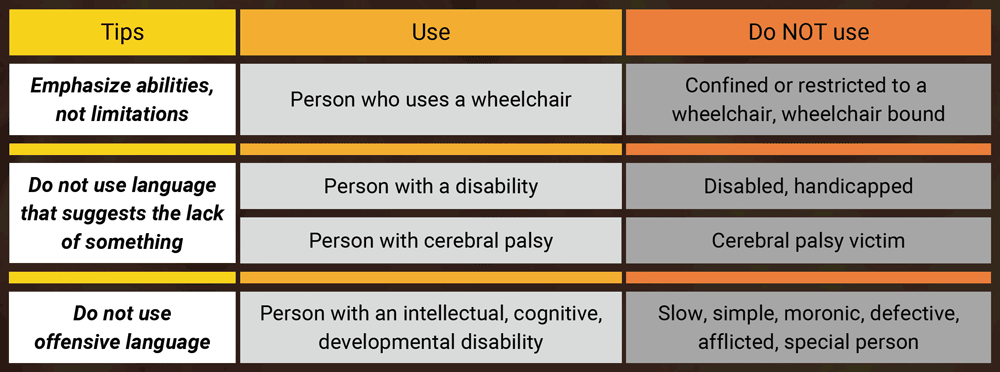According to the National Association of Councils on Developmental Disabilities‘ (NACDD) most recent Impact report, approximately 5 million individuals in the United States have developmental disabilities (DD). As defined in the DD Act, a developmental disability is:
a severe, chronic disability, which originated at birth or during the developmental period (prior to age 22), is expected to continue indefinitely, and substantially restricts the individual’s functioning in several life activities.
Developmental disabilities include:
- Autism spectrum disorder
- Cerebral palsy
- Down syndrome
- Fetal alcohol syndrome
- Spina Bifida
- Intellectual disabilities
While those with disabilities face barriers that make it difficult (or even impossible) for them to function, the Centers for Disease Control and Prevention (CDC) identify the seven most common barriers:
- Attitudinal
- Communication
- Physical
- Policy
- Programmatic
- Social
- Transportation
The impact of the barriers people with disabilities face is significant:
Employment: In 2017, 35.5% of people with disabilities, ages 18 to 64, were employed, while
76.5% of people without disabilities were employed
Education: Adults age 18 years and older with disabilities are less likely to have completed high
school compared to their peers
Income: People with disabilities are more likely to have income of less than $15,000 compared
to people without disabilities
Removing Barriers and Improving Inclusion
Removing barriers – such as physical, communication, and attitudinal – for people with disabilities
requires practices and policies that promote inclusion. Several national policies exist to protect the
rights of people with disabilities:
- American with Disabilities Act (ADA): ada.gov
- Section 504, Rehabilitation Act of 1973: dol.gov/agencies/oasam/centers-offices/civil-rightscenter/statutes/section-504-rehabilitation-act-of-1973
- Patient Protection and Affordable Care Act: healthcare.gov
Learning ways to communicate with and about people with disabilities by using people-first language can help reduce unintentional insensitivity and promote understanding and dignity. Here are some tips:

Sources:
CDC: Common Barriers to Participation Experienced by People with Disabilities: https://www.cdc.gov/ncbddd/disabilityandhealth/disability-barriers.html
CDC Disability and Health Inclusion Strategies: cdc.gov/ncbddd/disabilityandhealth/disabilitystrategies.html
NACDD State Developmental Disabilities Councils 2012–2016 INVESTMENTS TOWARD IMPACT report: https://nacdd.org/wp-content/uploads/2017/10/DD-Councils-Impact-Report.pdf
